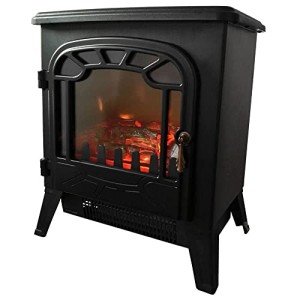7 Things About Best Fireplace You'll Kick Yourself For Not Knowing
The Best Fireplaces: A Comprehensive Guide for Homeowners
Fireplaces have long been a precious feature in homes, supplying both warmth and an inviting atmosphere. They are available in different styles, sizes, and fuel types, enabling house owners to choose one that fits their individual aesthetic and heating requirements. Fireplace Styles looks into the very best fireplaces, highlighting key functions and factors to consider to assist you make a notified choice.
Types of Fireplaces
Comprehending the various types of fireplaces is crucial in selecting the very best option for your home. Below are the most typically utilized fireplaces:
Wood-Burning Fireplaces
- Benefits: Traditional appeal, natural atmosphere, and efficient heating.
- Drawbacks: Requires regular upkeep, ash disposal, and goes through local policies regarding emissions.
Gas Fireplaces
- Advantages: Convenient, clean-burning, and easy to run.
- Drawbacks: Requires a gas line, can be more costly to set up initially.
Electric Fireplaces
- Benefits: Easy installation, low upkeep, and the best choice for homes with children or pets.
- Disadvantages: Lack the authentic feel of wood or gas flames, may not heat large spaces successfully.
Pellet Stoves
- Advantages: Eco-friendly, effective, and offer a stable heat output.
- Drawbacks: Requires electrical energy to operate, and pellet supply can be restricted in some locations.
Ethanol Fireplaces
- Benefits: No chimney needed, portable, and ecologically friendly.
- Disadvantages: Generally less efficient for heating.
A Comparison of Fireplace Types
Type
Setup Cost
Running Cost
Heat Output
Upkeep
Ecological Impact
Wood-Burning
₤ ₤
₤
High
High
Moderate
Gas
₤ ₤ ₤
₤ ₤
Medium-High
Low
Moderate
Electric
₤
₤ ₤
Low
Very Low
Low
Pellet
₤ ₤
₤
Medium
Medium
Low
Ethanol
₤ ₤
₤ ₤ ₤
Low
Really Low
Extremely Low
Leading Considerations When Choosing a Fireplace
When you're in the marketplace for a new fireplace, keep the following consider mind to ensure you select the best one for your home:
Purpose and Functionality: What do you want your fireplace to do? Is it for heating or aesthetics? Fireplace Styles will direct your option considerably.
Space Availability: Measure the area where you desire to set up the fireplace. Ensure the chosen type fits without overwhelming the area.
Fuel Source: Assess the availability and cost of different fuel sources in your area to avoid unanticipated expenditures.
Installation Complexity: Some fireplaces might need substantial modifications to your existing home structure.
Building Regulations and Regulations: Be aware of regional laws concerning ventilation, security, and emissions, as these can influence your fireplace option.
Aesthetic Appeal: The style and style of a fireplace can work as a centerpiece or enhance the existing design, so choose one that improves your home's total aesthetic.
Advantages of a Fireplace
Adding a fireplace to your home affords various advantages:
Enhanced Aesthetic Appeal: A fireplace can elevate the decor of any space, developing a cozy and welcoming atmosphere.
Increased Home Value: A well-installed fireplace can add significant worth to your home, making it interesting potential purchasers.
Energy Efficiency: Modern fireplaces, particularly gas and pellet ranges, can supply efficient heating while minimizing energy costs.
Emergency Situation Heat Source: In cases of power interruptions, a wood or gas fireplace can work as a reputable heat source.
Celebration Space: Fireplaces often end up being the focal point for gatherings, promoting warmth and comfort during friend or family' parties.
Regularly Asked Questions (FAQs)
**Q: How much does it cost to install a fireplace?A: Installation costs can differ significantly based upon the type of fireplace, structural requirements, and labor costs. Fundamental electric fireplaces may cost around ₤ 300, while customized wood or gas fireplaces can run from ₤ 3,000 to upwards of ₤ 10,000. Q: Are electric fireplaces safe?A: Yes, electric
fireplaces are usually safe.
They do not give off carbon monoxide gas and have no open flames. They frequently consist of safety functions like automated shut-off mechanisms. Q: How often should I have my chimney cleaned?A: If you utilize a wood-burning fireplace, it's recommended to have your chimney cleaned up at least once a year
**
to avoid creosote accumulation, which can cause chimney fires. Q: Can I set up a gas fireplace myself?A: It's not a good idea to set up a gas fireplace without expert assistance due to the complexities connected with gas
lines, ventilation, and safety regulations. Q: What are the best kinds of fuel for wood-burning fireplaces?A: The best fuel choices consist of well-seasoned hardwoods like oak, maple, or hickory, as they burn hotter and cleaner compared to softwoods. Selecting the very best fireplace for your home
includes considering numerous factors, from aesthetic appeals to work and security. Each type of fireplace has its special advantages and potential drawbacks.
Comprehending these aspects, in addition to your individual heating needs and budget plan restraints, will guide you in making a notified choice. Ultimately, a fireplace can offer not just warmth however also a rich atmosphere, transforming your home into a welcoming sanctuary. 